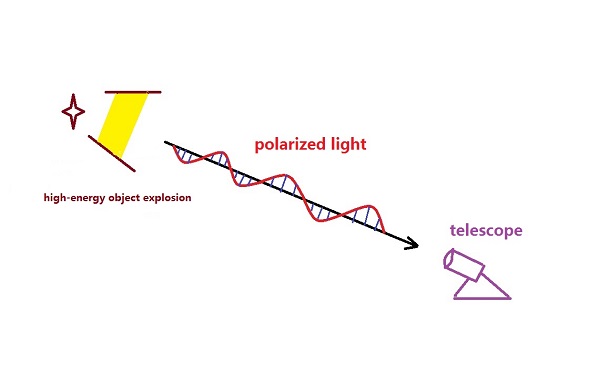Prof. MAO Jirong from Yunnan observatories of Chinese Academy of Sciences has developed some theories about polarization study of high-energy celestial objects during recent years. The latest paper has been published on Astrophysical Journal (ApJ).
High-energy celestial objects usually have high polarization degrees, which comes from synchrotron radiation. The polarization degree is dependent on the electron energy distribution, the magnetic field topology, and the media properties from the radiation propagation. Astronomers are keen for the comprehensive investigations in this research field. Prof. Mao calculates the linear and circular polarization of the electron radiation in both small-scale and large-scale magnetic field (radiation called jitter and synchrotron, respectively), in the case that thermal and non-thermal electrons are co-existed. Radiative transfer processes are also considered. These theoretical results can be applied to study electromagnetic counterpart of gravitational wave, gamma-ray burst, fast radio burst, blazar, and young supernova remnant. Telescopes in the high-energy, optical, and radio bands are expected for further observations and identifications. Prof. Mao and other researchers analyze the blazar depolarization properties in the optical band. They find that magneto-hydrodynamic turbulence has important impact on the depolarization. Based on the above works, five papers altogether have been published in the Astrophysical Journal in sequence.
Prof. Mao also joins in an international cooperation team dominated by an Italian group. They use very large telescope (VLT) located at European Southern Observatory (ESO) to observe the polarization radiation from the kilonova phase of the electromagnetic counterpart of gravitational wave GW170817. The paper is published in Nature Astronomy. The theoretical works made by Prof. Mao can provide some predictions of the polarization properties for GW170817 afterglow. This is also helpful to reveal physical mechanisms of high-energy celestial objects.

Polarization detection of high-enegy celestial object explosion (Image by MAO Jirong)
Contact:
MAO Jirong
jirongmao@mail.ynao.ac.cn
Yunnan Observatories, CAS